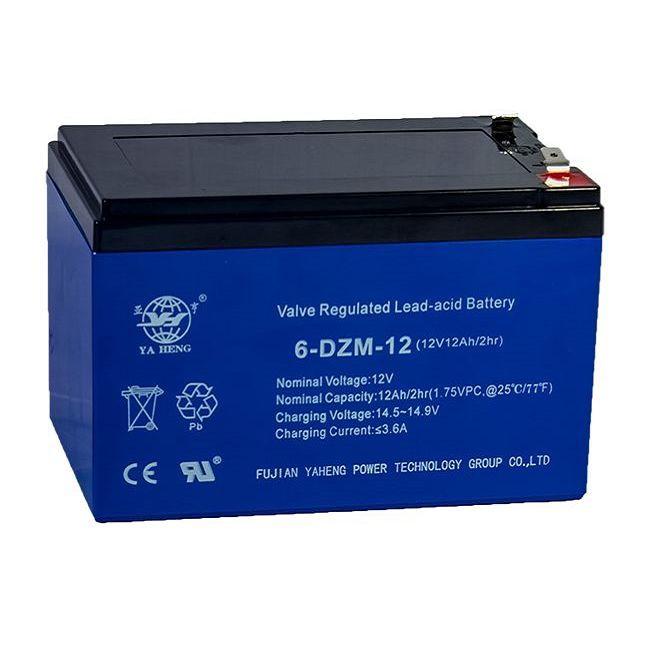As an e-bike battery supplier, I often receive inquiries from customers about using e-bike batteries that have been stored for a long time. This is a crucial question, as improper handling of long - stored batteries can lead to safety risks and reduced performance. In this blog, I'll delve into the details of whether you can use an e - bike battery that has been sitting idle for an extended period.


Understanding the Basics of E - bike Batteries
Before we discuss using long - stored batteries, let's briefly understand what an E-bike Battery is. E - bike batteries are rechargeable energy storage devices that power electric bicycles. They typically use lithium - ion or lead - acid chemistries. Lithium - ion batteries are more popular due to their high energy density, longer lifespan, and lighter weight compared to lead - acid ones.
When a battery is stored for a long time, several chemical and physical changes occur within it. These changes are influenced by factors such as storage temperature, state of charge (SOC) at the time of storage, and the type of battery chemistry.
Effects of Long - Term Storage on E - bike Batteries
Self - Discharge
All batteries self - discharge over time, even when not in use. Self - discharge is a natural process where the battery loses its charge due to internal chemical reactions. The rate of self - discharge varies depending on the battery chemistry. For example, lithium - ion batteries generally have a lower self - discharge rate compared to lead - acid batteries. If a battery is stored for a long time, it may lose a significant amount of its charge, which can lead to a phenomenon called deep discharge.
Deep Discharge
Deep discharge occurs when a battery is discharged below a certain voltage level. For lithium - ion batteries, deep discharge can cause irreversible damage to the battery cells. It can lead to the formation of metal deposits on the electrodes, which can short - circuit the battery and pose a safety hazard. In lead - acid batteries, deep discharge can cause sulfation, where lead sulfate crystals form on the battery plates. Sulfation reduces the battery's capacity and lifespan.
Capacity Loss
Long - term storage can also lead to capacity loss. The battery's ability to hold a charge decreases over time, especially if it is stored at high temperatures or in a fully charged or fully discharged state. High temperatures accelerate the chemical reactions inside the battery, which can break down the battery's components and reduce its capacity.
Aging
Battery aging is an inevitable process that occurs over time. The battery cells degrade, and their performance deteriorates. The rate of aging is influenced by factors such as storage conditions, charge - discharge cycles, and the quality of the battery. Even if a battery is not used, it will still age during storage.
Assessing a Long - Stored E - bike Battery
Visual Inspection
Before attempting to use a long - stored e - bike battery, it's important to conduct a visual inspection. Check for any signs of physical damage, such as cracks, bulges, or leaks. A damaged battery should not be used, as it can be dangerous. If you notice any of these issues, it's best to dispose of the battery properly and replace it with a new one.
Voltage Measurement
Use a multimeter to measure the battery's voltage. Compare the measured voltage with the battery's rated voltage. If the voltage is significantly lower than the rated voltage, it may indicate a deeply discharged or damaged battery. For example, a fully charged 36V lithium - ion e - bike battery should have a voltage of around 42V. If the measured voltage is much lower, say 20V or less, it's a sign that the battery may need further testing or replacement.
Capacity Testing
Capacity testing involves fully charging the battery and then discharging it at a constant current until it reaches a certain voltage level. The amount of charge that can be drawn from the battery during the discharge process is its capacity. If the measured capacity is significantly lower than the battery's rated capacity, it indicates that the battery has suffered capacity loss during storage.
Can You Use a Long - Stored E - bike Battery?
Whether you can use a long - stored e - bike battery depends on several factors. If the battery has been stored under ideal conditions (moderate temperature, appropriate state of charge), and shows no signs of physical damage or significant capacity loss, it may still be usable.
However, if the battery has been deeply discharged, shows signs of damage, or has a significantly reduced capacity, it's not advisable to use it. Using a damaged or degraded battery can not only lead to poor performance but also pose a safety risk, such as overheating, fire, or explosion.
Reviving a Long - Stored E - bike Battery
In some cases, it may be possible to revive a long - stored e - bike battery. Here are some steps you can take:
Trickle Charging
If the battery is deeply discharged, you can try trickle charging it. Trickle charging involves charging the battery at a very low current for an extended period. This can help bring the battery's voltage back up to a safe level without causing further damage. However, it's important to monitor the battery closely during trickle charging to prevent overcharging.
Desulfation (for Lead - Acid Batteries)
For lead - acid batteries that have suffered from sulfation, desulfation techniques can be used. Desulfation involves applying a high - frequency pulse to the battery to break down the lead sulfate crystals. There are desulfation devices available on the market that can be used for this purpose.
Safety Precautions
When dealing with long - stored e - bike batteries, it's important to follow safety precautions:
- Always wear protective gear, such as gloves and safety glasses, when handling batteries.
- Charge the battery in a well - ventilated area away from flammable materials.
- Do not attempt to repair or modify the battery unless you have the necessary expertise.
- Dispose of damaged or non - usable batteries properly according to local regulations.
Other Related Electric Vehicle Batteries
In addition to e - bike batteries, we also supply Electric Tricycle Battery and Electric Golf Cart Battery. These batteries also face similar issues during long - term storage. The principles of assessing and reviving them are similar to those of e - bike batteries, but the specific voltage and capacity requirements may differ.
Conclusion
Using an e - bike battery that has been stored for a long time is possible in some cases, but it requires careful assessment and, in some instances, revival techniques. As an e - bike battery supplier, we recommend storing batteries under optimal conditions to minimize the negative effects of long - term storage. If you're unsure about the condition of a long - stored battery, it's best to consult a professional.
If you're in the market for high - quality e - bike batteries, electric tricycle batteries, or electric golf cart batteries, we're here to help. Our team of experts can provide you with the best advice and products to meet your needs. Contact us for procurement and let's start a fruitful discussion about your battery requirements.
References
- Linden, D., & Reddy, T. B. (2002). Handbook of Batteries. McGraw - Hill.
- Chen, Z., & Liu, J. (2014). Electrochemical Energy Storage for Green Grid. Chemical Reviews, 114(2), 1144 - 1162.




